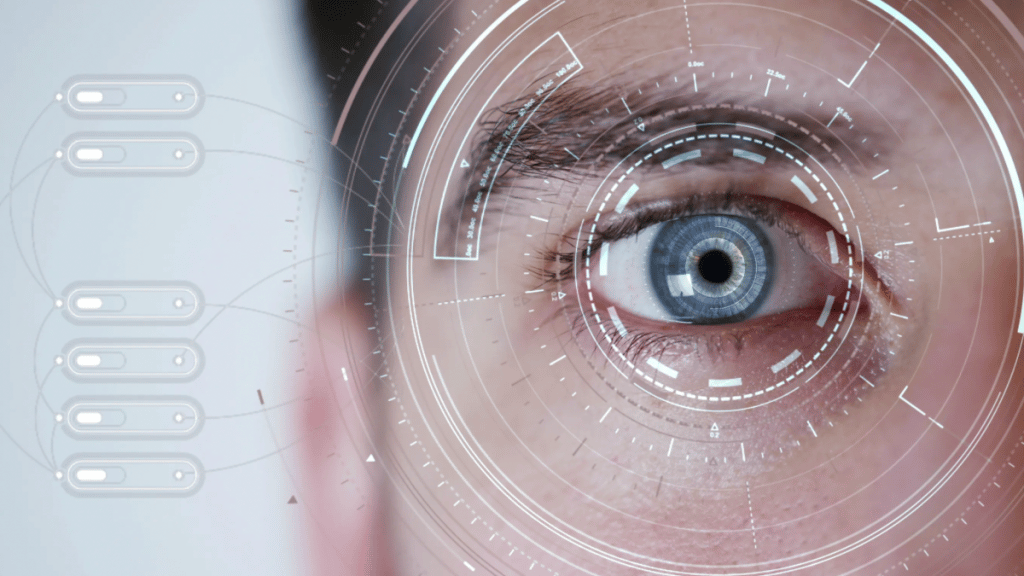Human behaviour is quite an integral aspect of any UX research. By tracking the various nuances of human behaviour, researchers get a deeper insight into how they should approach the design and development of any product. This, in turn, is crucial to building products that are human-centric and aligned with user needs and expectations.
One of the key aspects of understanding human behaviour with respect to design is eye-tracking.
Eye tracking technology is an important component in both market research and UX research. It is important for usability testing and in understanding those elements that a user’s eye is most drawn to.
In this article, we dive into eye-tracking and everything there is to know about it. Read on to find out how this interesting technology works and how it is used.
What is eye-tracking technology?
The human eye has its own unique mechanisms when reading or gazing at a particular subject. Eye-tracking technology tracks these mechanisms to develop an understanding of what engages a user and what they are likely to ignore.
Eye-tracking observes aspects such as:
- Movement of the eye as users glances at an object
- How the pupil dilates when provided with visual stimuli
- The point of gaze where the user’s visual attention is focused
- What a user is not looking at or ignoring
By observing and measuring these nuances, UX researchers are able to gather detailed data on how their test subjects are reacting to a website or product design. It is an important step in gauging users’ preferences and decisions.
How is eye-tracking used?
Eye-tracking is primarily used in three major areas. We discuss them in detail below:
Usability testing
Essentially, usability testing is a method to understand how a group of test users reacts to a particular design. Based on various factors, usability testing gives insights into how easy a design is to use. This includes identifying how users scan pages, what grabs their attention the most, what they see when they first see the design, and what they see towards the end.
Eye-tracking is a highly reliable and accurate method for usability testing. This is because researchers are able to collect data as users are viewing a page and then make inferences from it.
Marketing
Advertising is integral for the long-term profitability of any business. With eye-tracking, researchers are able to better understand how users react to designs, product placement, colours, visual elements, packaging, etc. This enables marketers to design highly effective and eye-catching advertisements to generate increased sales.
Retail
Eye tracking is very effective in tracking customer behaviour and shopping patterns. It can be used to understand what we call shelf attention analytics.
Deeper insights allow retailers to design displays, banners, ads, store layouts, etc. that are aligned with user preferences and decisions.
How does eye-tracking work?
Now that we’ve understood eye-tracking technology, the next step is to understand how this technology actually works.
Before this, it is essential to understand the major eye-tracking features.
Eye movements
This comprises two main aspects-
1. Fixation:
When the eye stops at a point to collect visual information. The longer the fixation, the higher the information collected.
2. Saccades:
The eye jumps between various points and is not really collecting any in-depth visual information. In most cases, it shows a lack of interest.
Pupil size
It involves measuring the diameter of the pupil when the user is gazing at a visual stimulus. It is an indicator of attention span as well as emotional responses to the stimulus.
Visual attention
It measures the interest of a user toward a particular element by measuring how long the eye focuses on specific visual stimuli.
Now that the basics are understood, the next step is to understand the mechanism of eye-tracking.
There are primarily three elements in eye-tracking.
1. Sensors:
They record the direction in which light is being reflected off the cornea of the user.
2. Camera:
Webcam-based eye tracking in which high-resolution pictures of the user’s eye are taken.
3. Machine learning algorithms –
It shows exactly where the eye is focused.
How it works
In webcam eye-tracking, illuminators are first used to direct near-infrared light to the user’s eyes. This light is then reflected off the cornea of the user’s eye, which is recorded by the sensors. These reflections are then meticulously picked up by eye-tracker cameras that take multiple high-resolution pictures of these reflections.
As eye movements occur very fast, the position of the eye also changes quite rapidly. Because of this, the eye position is mapped out repeatedly every second. These patterns are then fed into a machine-learning algorithm that uses multiple filters and precise calculations to show where the user is looking.
The data is then interpreted based on the aspects we discussed above, such as eye movement, pupil dilation, and visual attention.
Final Thoughts
Eye-tracking has been around since the 90s and is still finding new applications across various industries. Perhaps one of the most powerful and accurate interpretations of human behaviour, eye tracking is definitely here to stay.
It can be used to identify areas of improvement and get insights into how the overall user experience can be made better.
When combined with the right research and data collection methods, eye-tracking is a highly valuable source of information and is a powerful driver of design decisions.
Today, there are plenty of tools out there to help businesses understand human behaviour in detail. These tools use unique behavioral AI technologies that use eye-tracking, among other features like facial expressions, tonality, brainwaves etc., to understand human emotions. The platform allows UX researchers to get thorough, unbiased insights from consumer research and allows brands to build user experiences that are truly human. It can be used to make effective design decisions as well as understand how users and consumers react emotionally to things like packaging, branding, etc.
